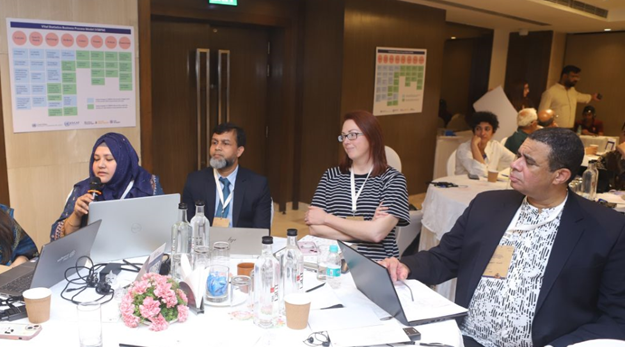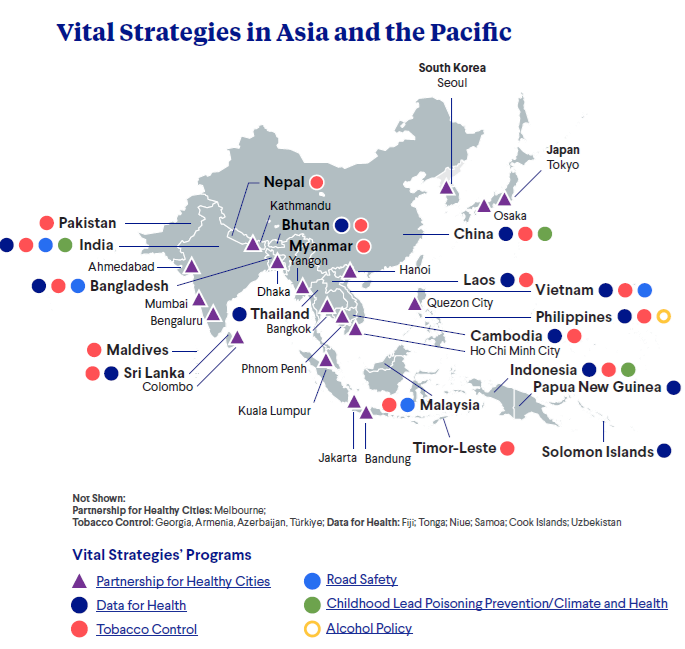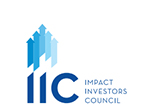|
Capital Provider Showcase
Dialogue with LM Singh, Managing Director, India, Global Head of Partnerships and Innovative Finance at Vital Strategies
|
|
.png)
1
What does Vital Strategies do, and how does it support public systems in India?
|
Vital Strategies is a global public health organization with a presence in 70+ countries and offices in seven countries. As a trusted partner of governments, we address the leading causes of death, disease, and injury, and envision a world where everyone has an opportunity to lead a healthy life. Focusing on NCDs, environmental health and climate change, injury prevention, and social determinants of health, our work promotes sustainable solutions that protect and promote health.
Our core approach is centered around data-driven decision-making and data intelligence. While working with mayors, city administrations, and governments globally, we use evidence to generate insights, inform local action, and set priorities that drive effective policy-making and promote ownership.
Vital Strategies India, a social enterprise, serves as the regional hub for South Asian countries. We aim to promote India-centric solutions that leverage its human capital, promote innovation and technology, foster greater South-South cooperation, and new-age development solutions that can catalyze sustainable development goals (SDGs) by leveraging the India advantage.
|
2
How does Vital Strategies implement integrated and multi-sectoral public health interventions?
|
We address public health challenges holistically – linking them with urbanization, environmental risks (e.g., air pollution), and other social and commercial determinants of health.
Recognizing the growing need to shift from siloed disease programs to holistic prevention, our Partnership for Healthy Cities work impacts key areas relevant to urban health, from NCD prevention and control, road safety, public health data and monitoring systems, to policymaking, by providing cities with intensive technical assistance on policy development and implementing proven population-level policy interventions. While we primarily engage with governments, we also bring together partners from civil society, industry, academia, and diverse stakeholders to co-create solutions that are multisectoral and tackle the root causes of diseases through integrated action. We understand local needs due to our close government engagement and have the ability to bring in knowledge from different states and countries.
|
3
Collaboration between governments, private investors, and public health organizations is becoming increasingly important to solve complex health challenges. What methods have worked best to bring these stakeholders together, and what are the biggest obstacles to successful partnerships? How does Vital Strategies approach monitoring, evaluation, and capacity building within government systems?
|
Bringing together governments, private investors, and public health organizations requires a shared understanding of both the problems and the solutions. What works well for us is anchoring our partnerships in a strong evidence base. Data plays a critical role in aligning priorities, making the case for collaboration, and demonstrating impact.
Indian civil society also plays a large role in accountability, public dialogue, public partnership, and service provision where government services are not able to meet all of the needs.
One of the toughest challenges is navigating the different expectations each stakeholder brings: public health organizations often focus on long-term impact, while private actors may prioritize returns or short-term results. Aligning these goals takes time, transparency, and continuous dialogue. When done right, these partnerships can deliver scalable, sustainable health solutions.
At Vital Strategies, our approach to monitoring, evaluation, and capacity-building is rooted in strengthening data-driven, government-owned systems. We start with evidence - developing policy briefs grounded in real-world insights. Our 150 policy briefs include clear metrics to guide decision-making and track outcomes. We provide technical assistance to the government and enable the use of data to inform decision-making. Our evaluations emphasize measurable outcomes, the economic return on preventive health, and long-term public health impact. For example, we quantify how each dollar invested in prevention can yield significant downstream savings (cost-effective analyses). What sets our approach apart is deep government collaboration from day one - ensuring buy-in and building simple, effective systems that are designed to last.

Global workshop including govt representatives from various countries on technical guidance on improving business processes to strengthen civil registration and vital statistics (CRVS) systems
|
4
The intersection of urbanization and climate change is creating new stressors on public health - from extreme weather events such as heat waves and droughts to increases in vector-borne diseases. How are these problems reshaping the approach to public health? How is Vital Strategies addressing emerging challenges like the intersection of climate change and public health?
|
At Vital Strategies, we recognize that climate change is not just an environmental issue—it’s a growing public health crisis. We approach this intersection by focusing on environmental health as a core pillar of our work, with a particular emphasis on air pollution, which alone causes 6 to 7 million deaths globally each year. In India’s urban settings, we’re seeing how environmental degradation and rapid urbanization reduce life expectancy by 3 to 4 years and significantly contribute to non-communicable diseases, especially respiratory illnesses. Our strategy is to integrate environmental concerns into broader health interventions. We develop policy recommendations that address these emerging risks and create multi-sectoral, preventive solutions that factor in environmental determinants of health. Through a data-driven lens, we use technology and intelligence systems to map and monitor the effects of climate on health, ensuring our interventions are evidence-based. Additionally, we’re exploring innovative financing models, like blended finance, to mobilize resources for climate-resilient health systems and support enterprises building solutions in this space. Ultimately, our goal is to help governments, innovators, and partners develop adaptive, sustainable public health responses that meet the demands of a changing environment.
.jpg)
ASHAs participating in a workshop in Indore, Madhya Pradesh, where they were trained on the health effects of air pollution and how people can protect themselves
|
5
With rapid urbanization and shifting lifestyles, we’re seeing a rise in NCDs linked to factors like poor diets, air pollution, and sedentary behaviour. What are some of the most pressing health risks emerging from urbanization, and how is Vital Strategies working to address them? What are some examples of Vital Strategies’ interventions targeting specific NCD risk factors, such as tobacco use or air pollution?
|
NCDs are responsible for 74% of global deaths and disproportionately impact low- and middle-income countries (LMICs). Most common NCDs share similar risk factors, e.g., tobacco use, physical inactivity, excessive alcohol use, exposure to air pollution, unhealthy diet/ obesity, are leading causes of cancer, cardiovascular disease, diabetes, mental illness, etc. Our approach to addressing NCDs is holistic and deeply rooted in prevention and control.
Without action, cumulative economic losses from NCDs could exceed $47 trillion globally by 2030. However, scaling up WHO’s population-level NCD ‘Best Buys’ from 5% to 80%, covering all LMICs, would cost $11.4 billion, which is less than 5% of the current global annual health expenditure and almost at par with the Leviathan cost of inaction.
One of our core beliefs is that investing in prevention yields powerful returns; in fact, every dollar invested in preventive health can return seven to eight dollars in economic benefit. Our interventions target both the direct risk factors and the social determinants of health, often through behavior change communication and early screening initiatives. In the realm of air pollution, we’ve offered evidence-based policy recommendations and championed technology-based solutions that reduce health risks. We also engage in urban health efforts, encouraging healthier city planning and deploying point-of-care technologies for early detection. Underpinning all of this is our Policy Accelerator, through which we help governments design and implement integrated NCD prevention strategies. Ultimately, we combine policy, technology, our ability to convene stakeholders, and community-focused solutions to address the full spectrum of factors driving NCDs in India.
|
6
What are your thoughts on the role of private players in improving public health in India, given that they provide nearly 70% of healthcare services? How can we establish effective collaborations between public health organizations and private sector entities, such as hospitals, insurers, and service providers, to achieve the greatest possible impact?
|
Private players play a significant role in India’s health system, both as a provider of services and a payor. The challenge in collaboration with the public sector lies in the fragmentation within the system—while many institutions are doing good work, they often operate in siloes.
The interoperability of data between these stakeholders is essential. Furthermore, there is a need for alignment of data governance structures, frameworks, and dashboards.
Given the burgeoning demand and economic growth, opportunities exist across the value chain that can deliver compelling financial returns and have an enormous development impact. The private sector is highly diverse, fragmented, and has the potential to be better regulated. There is a need to foster risk pooling and derisking of investments through credit guarantees and blended financing, wherein banks can lend and private providers can succeed in reaching the last mile.
As an example, the Social Stock Exchange (SSE) in India has shown that we can expand the use of catalytic capital mechanisms (e.g., health taxes, blended finance structures). Additionally, private and public players can collaborate to co-create national and state-level frameworks for outcome measurement, supporting the design of innovative financing pilots, and leveraging their global expertise to inform policy and regulatory reforms. The British Asian Trust Impact Bonds model shows private sector appetite for measurable returns.
Lastly, to achieve impact, it's important to move from a program-based approach to a system-wide one, where private entities are seen not merely as implementers but as equal partners in designing and delivering scalable healthcare solutions.
|
7
What emerging funding gaps do you see arising from the impact of shifting global funding trends, such as United States Agency for International Development (USAID) funding closures and World Health Organization (WHO) budget cuts, on India's public health initiatives?
|
Emerging global funding cuts and shifts are forcing a critical rethink of how we sustain public health gains in India. The global health funding landscape is evolving with a shift towards localized decision-making, diversified financing models, and new donor interests.
As donors like USAID and WHO recalibrate their priorities or reduce allocations (close to 80%, by USAID), we’re seeing widening gaps in areas like TB, HIV, immunization, etc. At the same time, newer priorities such as climate-linked threats, mental health, and other NCDs, such as cancers, are gaining recognition but lack dedicated, long-term financing.
Innovative finance is a potential solution to fund public health initiatives. It is transforming the way global health initiatives will be funded, moving beyond traditional donor-led models towards blended finance, impact investing, social bonds, and public-private partnerships. These mechanisms can mobilize new resources, enhance financial sustainability, and drive greater impact. Donors are exploring new ways to create impact through efficiency, innovative financing models, and integrating health programs with other development priorities.
If we consider other financing sources, private sector funding has grown at ~9% annually in the last five years, driven by domestic giving across family philanthropy (affluents, HNIs, UHNIs) and CSR spending in India. In addition, collaboratives are uniting stakeholders. India can leverage sustainable models of CSR, SSE, etc., to address the funding gaps.
Since India is not highly donor-dependent, the current funding changes will not significantly impact it. India has the potential to and should proactively lead through impact investing and blended finance in public health.
|
|
|
.png)
LM Singh, Managing Director, India, Global Head of Partnerships and Innovative Finance at Vital Strategies
Mr. LM Singh is the Managing Director, India, Global Head of Partnerships and Innovative Finance at Vital Strategies, a global public health organization that seeks to address the leading causes of death, disease or injury by advancing solutions with enduring impact.
Mr Singh has held senior leadership and board positions working with Fortune 500 and high growth companies in India, Uk, USA and the Middle east. He has a unique blend of mainstream investing and development finance expertise across public and private equity investing, blended finance, mergers acquisitions, buyouts, public listings and fund raise. He led USAID/India’s health care-focused program PAHAL from the idea stage to a flagship financing program that was subsequently scaled as SAMRIDH Blended Finance facility.
Mr. Singh is committed to accelerating social development through financially viable and socially sustainable solutions that can leverage India’s competitive advantage to solve some of the most pressing development challenges for low to middle income countries
About Vital Strategies
Vital Strategies is a leading global public health organization and trusted partner of governments and civil society around the world. We design and support scalable solutions to address the leading causes of death, disease and injury. Our strategic focus areas include the climate, environmental, urban health, gender, with a special focus on non-communicable disease and health systems strengthening.
We leverage our unique world class technical expertise and global experience, across data to policy, research, awareness , blended finance, training capacity building gathered over more than two decades to bridge the gap between public health needs and their solutions with a focus on rapid large-scale impact in India and across South Asia.
|
|
About Impact Investors Council:
Impact Investors Council, India (IIC) is a member-based national industry body formed with an
objective to build and strengthen the impact investing eco-system in India. To know more about our work visit https://iiic.in or reach out to secretariat@iiic.in
|
Disclaimer: Data and Information in this newsletter is made available in good faith with the exclusive intention of helping market and ecosystem players, policymakers and the public build a greater
understanding of the Indian impact investing market. The data is collated from sources believed to be reliable and accurate at the time of publication. Readers are urged to exercise independent judgment and diligence in the
usage of this information for any investment decisions
Some of the information provided in this newsletter is supplied by third parties. It is important that all users understand that third party information is not an endorsement of any nature and has been put together with the
sole purpose of benefiting stakeholders.
|
| Unsubscribe |
|
|
|


.png)

.jpg)
.png)